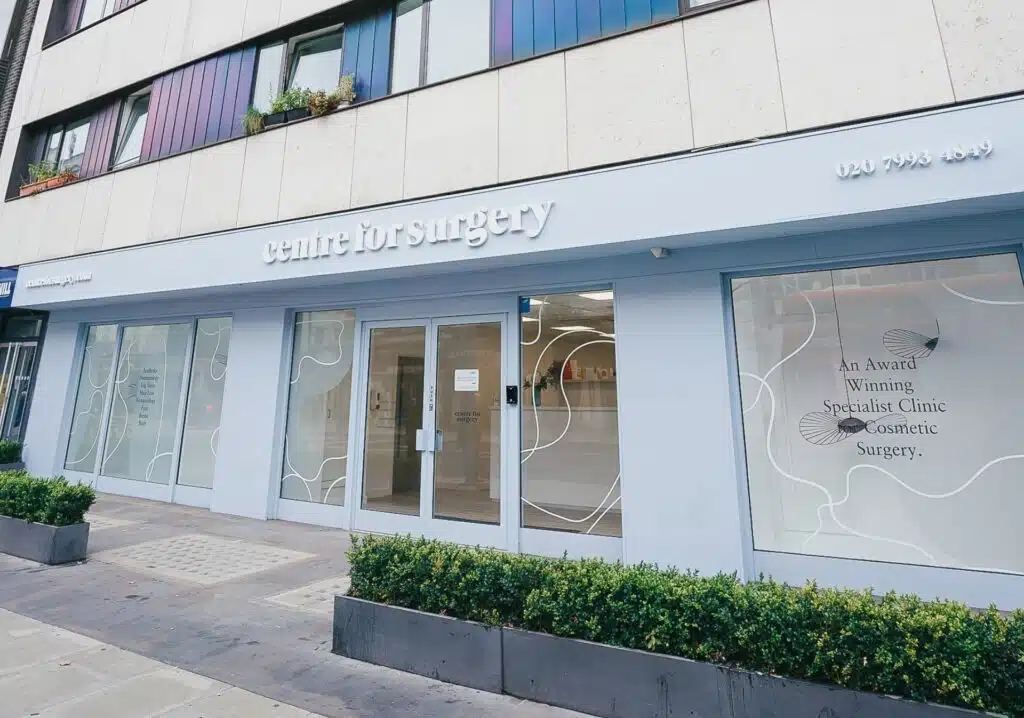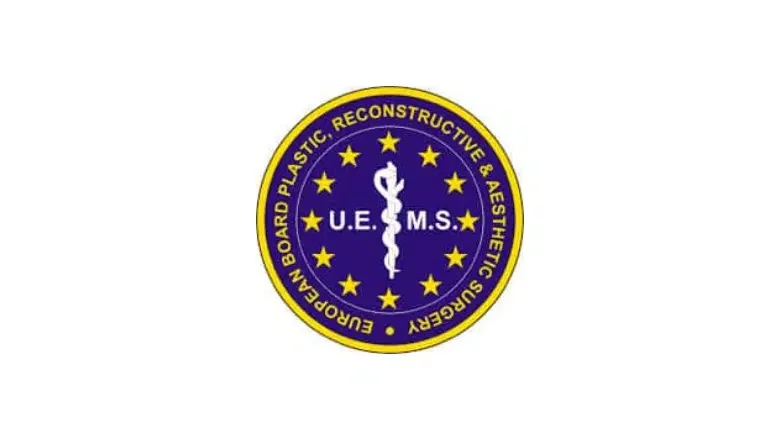A periareolar lift is a specific way of doing a breast lift, also known as a mastopexy. This type of cut is made around the areola and is best suited for people who have a slight droopiness in their breasts. It’s for those who don’t have enough sagging to need more complex lifts like a vertical or inverted-T lift, but still have enough sagging that simpler methods like crescent lifts or non-surgical options won’t work.
RELATED: Mini Breast Lift (Doughnut Mastopexy)
Here at Centre for Surgery in London, our surgeons are experts in all kinds of breast lift surgery. With a wealth of experience under their belts, they have the know-how to create a personalised surgical plan just for you. We consider your unique body shape and the look you want to achieve to provide the best possible outcome.
RELATED: Types of Breast Lift
Considering the Pros and Cons of a Periareolar Breast Lift
When you’re thinking about getting a breast lift, it’s important to weigh the pros and cons to make an informed decision. The periareolar breast lift is one specific technique that offers its own set of advantages and disadvantages.
Pros:
- Well-suited for Moderate Lifting Needs: The periareolar lift is particularly beneficial for those who require a moderate amount of lift. The procedure involves making a single incision that goes around the areola, catering to those with a medium-level need for lifting. This makes it a solid middle-ground option for those who don’t require an overly complex procedure but still need more than a simple tweak.
- Minimally Invasive: In the world of breast lifts, the periareolar method is one of the least invasive. Since it involves just one incision made around the areola, it’s considered to be less intrusive compared to other methods that require multiple incisions.
- Low Visibility of Scars: One of the most appealing aspects of a periareolar lift is that the scarring is generally hard to notice. The incision is made around the edge of the areola, which means that the scar blends in well with the natural pigmentation changes between the breast skin and the areola. This makes the scar almost invisible to the naked eye.
Cons:
- Potential Impact on Breastfeeding: It’s essential to know that any kind of breast surgery, including a periareolar lift, could potentially affect your ability to breastfeed. This is because the surgery might reduce milk production.
- Risk of Circular-Shaped Scar: While the scarring is usually minimal, there is the possibility of ending up with a scar that fully encircles the nipple. Some women may be predisposed to this kind of scarring, based on their skin type or genetic factors.
Who is the Ideal Candidate for a Periareolar Breast Lift?
If you’re experiencing some drooping in your breasts, you might be wondering if a periareolar breast lift is the right choice for you. This procedure is particularly effective for women who have a low to moderate level of sagging, also known as ptosis. The periareolar technique is designed to lift your nipple by a maximum of 2-3 cm, providing a subtle yet noticeable difference.
Breast Size Matters
One of the key factors that make you a good candidate for a periareolar lift is the size of your breasts. This procedure is best suited for women with small to medium-sized breasts. The technique is particularly effective for these sizes, as the lift is moderate and the amount of tissue involved is more manageable, allowing for better aesthetic results.
BMI Considerations
Body Mass Index (BMI) is another critical factor when considering a periareolar lift. At Centre for Surgery, it’s essential that prospective patients have a BMI under 30 to qualify for this specific procedure. Having a lower BMI generally results in better surgical outcomes and minimizes the risks associated with surgery.
The Periareolar Breast Lift Procedure Explained
If you’re considering a periareolar breast lift, it’s essential to understand how the procedure is performed. This will help you set realistic expectations and prepare for your surgical journey.
Anaesthesia
The first step in a periareolar breast lift is the administration of anaesthesia to ensure you’re comfortable and pain-free throughout the procedure. Depending on your case and your surgeon’s recommendation, this could be local anaesthesia with sedation or general anaesthesia.
Making the Incision
Once you’re comfortably anaesthetised, the surgeon will carefully make an incision. This incision will follow the natural pigment border of your areola. The goal here is to create a circle-like incision around the areola to allow for the removal of a disc of skin. This is the key aspect that differentiates the periareolar lift from other breast lift methods; it’s focused on a specific, singular incision around the areola.
Removing Skin and Tightening
After the incision has been made and the disc of skin removed, the next step is to bring the inner and outer circles of skin back together. This action tightens up the loose skin around the breast and raises the position of the nipple. It creates a more youthful and perky appearance, which is often the main objective of a breast lift.
Final Steps
The incisions will then be closed, usually with sutures that are either absorbable or will need to be removed later. After the surgery, you’ll likely have a brief recovery period in the clinic before you can go home.
Recovery Timeline After a Periareolar Breast Lift
Understanding the recovery process is a crucial part of planning for any surgical procedure, including a periareolar breast lift. Here’s what you can generally expect in terms of recovery time.
The First Couple of Weeks
During the initial two weeks following the procedure, you’ll likely experience some swelling and soreness in the breast area. These are normal post-surgical symptoms and should gradually subside. Many patients find that they can return to work and resume most day-to-day activities within this period. However, you’ll need to avoid strenuous physical activities, like heavy lifting and intense exercise, to allow for optimal healing.
Six-Week Mark
Most patients find that they make a complete recovery about six weeks after the surgery. By this time, any residual swelling or soreness should have significantly reduced or entirely disappeared. This is often the point where patients can fully return to all activities, including more strenuous physical exercises.
Additional Considerations
- Follow-Up Appointments: It’s essential to attend all follow-up appointments with your surgeon to monitor your progress and make sure everything is healing as it should.
- Wearing a Supportive Bra: Many surgeons recommend wearing a special post-operative bra that provides extra support during the healing process.
- Scar Care: You may be advised to apply scar cream or silicone gel sheets to help minimize scar visibility, although the periareolar method usually results in low-visibility scarring.
- Signs of Complications: Always be aware of signs of infection or complications, such as increased redness, swelling, or unusual discharge, and consult your healthcare provider immediately if you notice anything concerning.
When to Expect Results After a Periareolar Breast Lift
Undergoing a periareolar breast lift is an exciting experience, and it’s natural to be eager to see the final results. However, it’s important to have realistic expectations about the timeline for seeing these outcomes.
Immediate Post-Procedure Phase
Right after the surgery, you’ll likely find that your breasts appear higher on your chest and feel tighter than you might have expected. This is completely normal and is often due to the initial swelling and the body’s natural response to surgery.
The Healing Process
Over the subsequent weeks and months, your body will go through a healing process. As this happens, the swelling will start to go down. It’s during this time that you’ll begin to see more accurate results that reflect the surgery’s final outcome.
Final Appearance
Generally, within a couple of months, you can expect to see your breasts looking perkier and settling into their natural, uplifted position. The exact timeframe can vary depending on factors like your individual healing rate, age, and overall health.
Long-Term Care and Follow-Ups
Even after your breasts have settled into their new position, it’s important to continue following your healthcare provider’s advice and attending any scheduled follow-up appointments. These appointments allow for any necessary adjustments and ensure that you’re healing properly.
Exploring Other Types of Breast Lift Techniques
While a periareolar breast lift may be ideal for certain candidates, it’s worth noting that there are other techniques that could better suit your specific needs. Your surgeon will consider factors like the degree of sagging, your breast size, and your aesthetic goals to recommend the most appropriate method. Here’s a rundown of some other commonly used breast lift techniques:
Crescent Lift
- What it is: The crescent lift involves a small incision made along the top half of the areola.
- Best for: This technique is ideal if you have only minor sagging in your breasts and are primarily looking to reposition the areola.
- Invasiveness: Among all breast lift types, the crescent lift is the least invasive, limiting the surgical impact to just lifting and repositioning the areola.
Vertical Lift
- What it is: In a vertical lift, the surgeon makes a lollipop-shaped incision that encircles the areola and includes a vertical incision from the base of the areola down to the breast crease.
- Best for: This approach is recommended for patients who have a moderate to high amount of excess skin. The vertical lift allows the surgeon to remove more skin, elevate the nipple, and even reduce the areola’s size if needed.
- Invasiveness: While more invasive than the crescent or periareolar methods, it offers the ability to tackle more extensive sagging issues effectively.
Inverted-T Lift
- What it is: This is the most invasive type of breast lift, involving three incisions: one around the areola, another vertically from the areola to the breast crease, and a third along the crease itself.
- Best for: An inverted-T lift is most suitable for patients with large breasts or a significant amount of excess skin that extends both horizontally and vertically across the breast.
- Invasiveness: As the most invasive option, this technique allows the surgeon to remove the maximum amount of excess skin and achieve a dramatic lifting effect.
Your surgeon’s recommendations will depend on various factors, including your body’s unique anatomy and your desired outcomes. Therefore, it’s crucial to consult with experienced healthcare providers, like the experts at Centre for Surgery, to explore all your available options.
Periareolar Breast Lift in London – Why Choose Centre for Surgery
When it comes to undergoing a periareolar breast lift, choosing the right clinic and surgeon is crucial for achieving your desired results. Centre for Surgery in London is a specialist plastic surgery clinic with a wealth of experience in breast lift procedures. But why should you entrust your breast lift journey to us?
Expertise and Personalised Care
At Centre for Surgery, our surgeons are highly skilled and have extensive experience in the field of breast lift surgery. We understand that each patient is unique, and we tailor our approach to suit your individual anatomy and aesthetic goals. From your initial consultation to your post-operative care, we ensure you receive the highest level of personal attention and expert guidance.
State-of-the-Art Facilities
Our clinic at 95-97 Baker Street is equipped with the latest technology to ensure your safety and comfort throughout the procedure. We uphold the strictest standards in healthcare to provide you with an exceptional surgical experience.
Comprehensive Finance Options
We understand that financing your breast lift is an important consideration. That’s why we offer a range of finance options, including 0% APR with Chrysalis Finance, to make the process easier for you. Learn more about our finance options.
In-Depth Resources
For more information about breast lifts and other cosmetic procedures, you can refer to our plastic surgery blog and clinic FAQs.
What Our Patients Say
Testimonial 1: “Centre for Surgery made my breast lift experience a breeze. The entire team was incredibly supportive, and the results exceeded my expectations. I couldn’t be happier!” – Sarah, London
Testimonial 2: “I had my periareolar breast lift at Centre for Surgery and the outcome is phenomenal. The level of care from consultation to recovery was top-notch. Highly recommended.” – Emily, London
Testimonial 3: “The surgeons at Centre for Surgery are true experts. They made me feel comfortable throughout the process, and I’m thrilled with my results. Excellent service all around.” – Laura, London
Get in Touch
Ready to book your consultation for a periareolar breast lift in London? Contact us today:
- Phone: 0207 993 4849
- Email: contact@centreforsurgery.com
Or visit our Contact Us page for more options.
For more details about us, please visit our About Us page.
To find out more about our Baker Street clinic, you can visit this link.
Your journey to a more confident you starts here at Centre for Surgery in London. We look forward to guiding you every step of the way.












